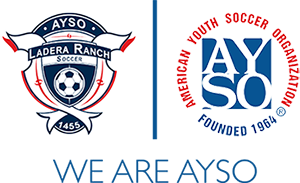All other things being equal, the more:
- Touches on ball,
- Physical conditioning, and
- Digestible tactics
you can incorporate into each activity, the faster your players will develop and the more fun they will have. So how can we incorporate this knowledge into our drill design?
Increasing Touches on Ball
Sitting in traffic is one of the more boring activities we do as adults. So why do we subject our players to similarly long lines that prevent them from playing soccer! We can do better:
- Divide and conquer – Split your team up and have multiple interactions of the same activity going on
- Add supporting roles – Add additional roles in the drill to make it more game like. Add defenders, add a passing partner, etc
- Create multiple steps – After the player executes the main part of the drill, instead of returning straight to line they can complete 1 or more other objectives
What you’re aiming for is a max 1-2 players standing in front of them before their next iteration. That also helps promote our next point…
Increasing Physical Conditioning and Agility
At the end of each drill, your players should be visibility tired and in need of a break. It’s one thing to learn a skill and be able to produce it fresh, but soccer players need to be able to demonstrate skills when tired as well. To add conditioning to any drill:
- Increase distance – Have the players cover more ground before executing on the main objective
- Increase pressure – Have a defender sprinting to intercept the player on the ball
- Increase speed – Have the player perform the activity at a full sprint
Keep an eye on your players as the drill progresses. Once the quality of the drill starts to suffer, players are struggling to get back to line etc. you know you’re approaching a break time. Don’t break right away though, let players complete a few iterations while exhausted, this is where you encourage them to push through.
Incorporating Tactics
All drills should be as life like to the game of soccer as possible. Any good drill is simply a very specific game scenario which is simplified and repeated. Your job as coach as to help your players pull as many teaching aspects out of a session that your players can digest:
- Connect the dots – Even if your drill is game like, you still need to tell them why they’re doing this drill and when would they expect to see this scenario in a game and what specific skills do you want them focused on
- Compound activities – When lifting at the gym, the best exercises are compound, meaning they work multiple muscle groups at the same time. Great drills are like this too. Why work on just shooting when you can work on shooting and feints at the same time
- Digestible – If the players aren’t able to actually learn and incorporate what you’re telling them, then you’re just confusing them. While you watch them, keep highlighting the good examples of the main point. When the players seem to have that one, add another. It’s not uncommon to end up going over 4-5 coaching points during one 10 minute activity
Fun
Fun is great memory glue. During practice replace the word “drill” with “game” when talking to your players. Any drill can be made into a game with little to no change to the structure. Consider:
- Breaking them up into two groups that compete. Drill continues to a certain score or a “best of 7” etc
- Having players keep track of their own score. The drill is over when one player reaches a certain score or every player has reached a certain score
- Bounties – Set a group objective that must be met. E.g. 7 goals or passes in a row, 1 full iteration where everyone touches the ball etc.
Players learn best when they’re engaged. Boredom is your enemy.
—
If all of these points make it seem difficult to design a great drill, that’s because it is! It’s easy to have players line up single file, run up and practice a certain technique then return to line. It’s MUCH harder to design highly compelling and effective drills. It’s for that reason that at the Initial stage of development (8u and below) it’s perfectly acceptable for newer coaches to use pre-built practice plans. See the follow up on Building A Session Plan for great, pre-built plans leveraging the ideas above.



Leave A Comment